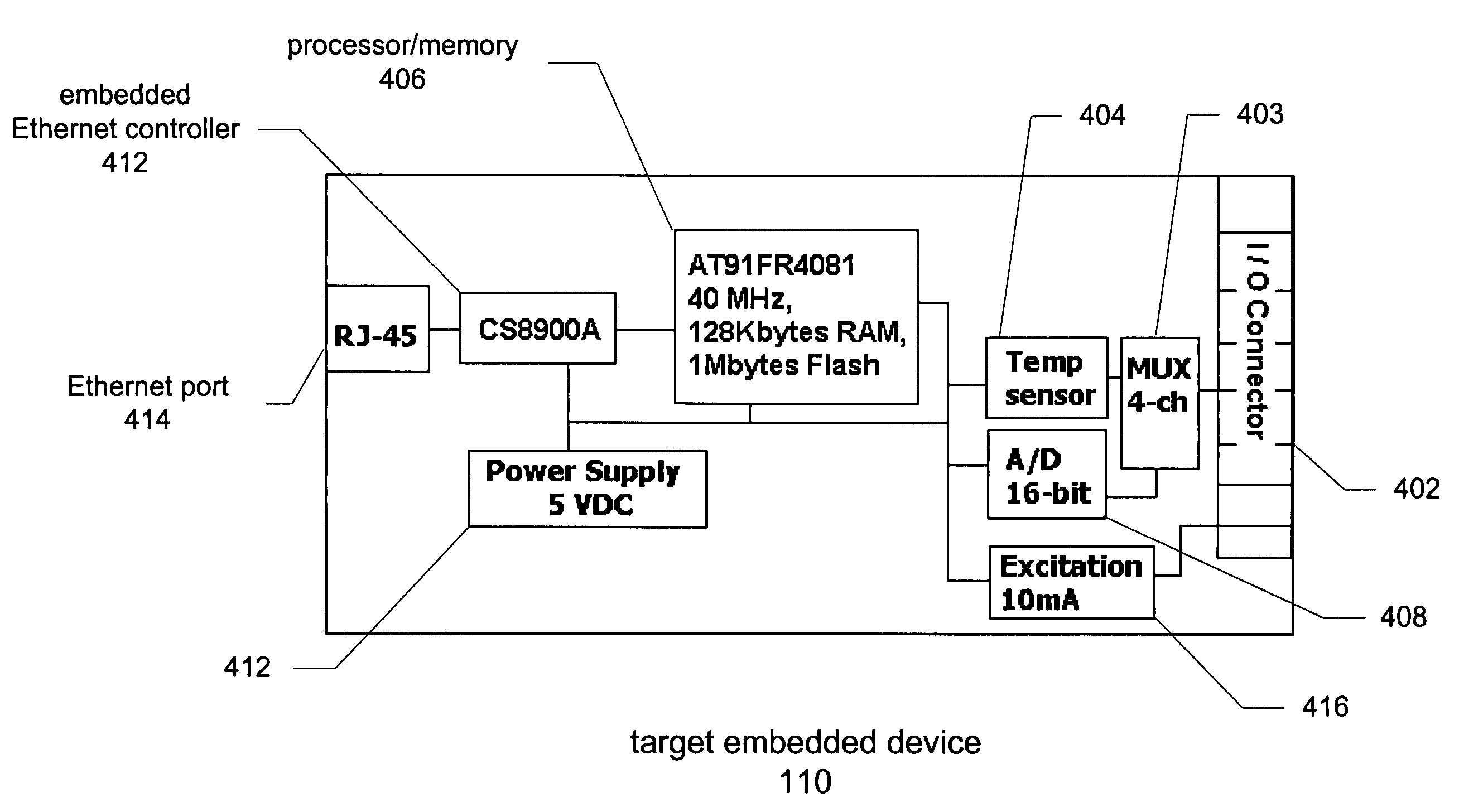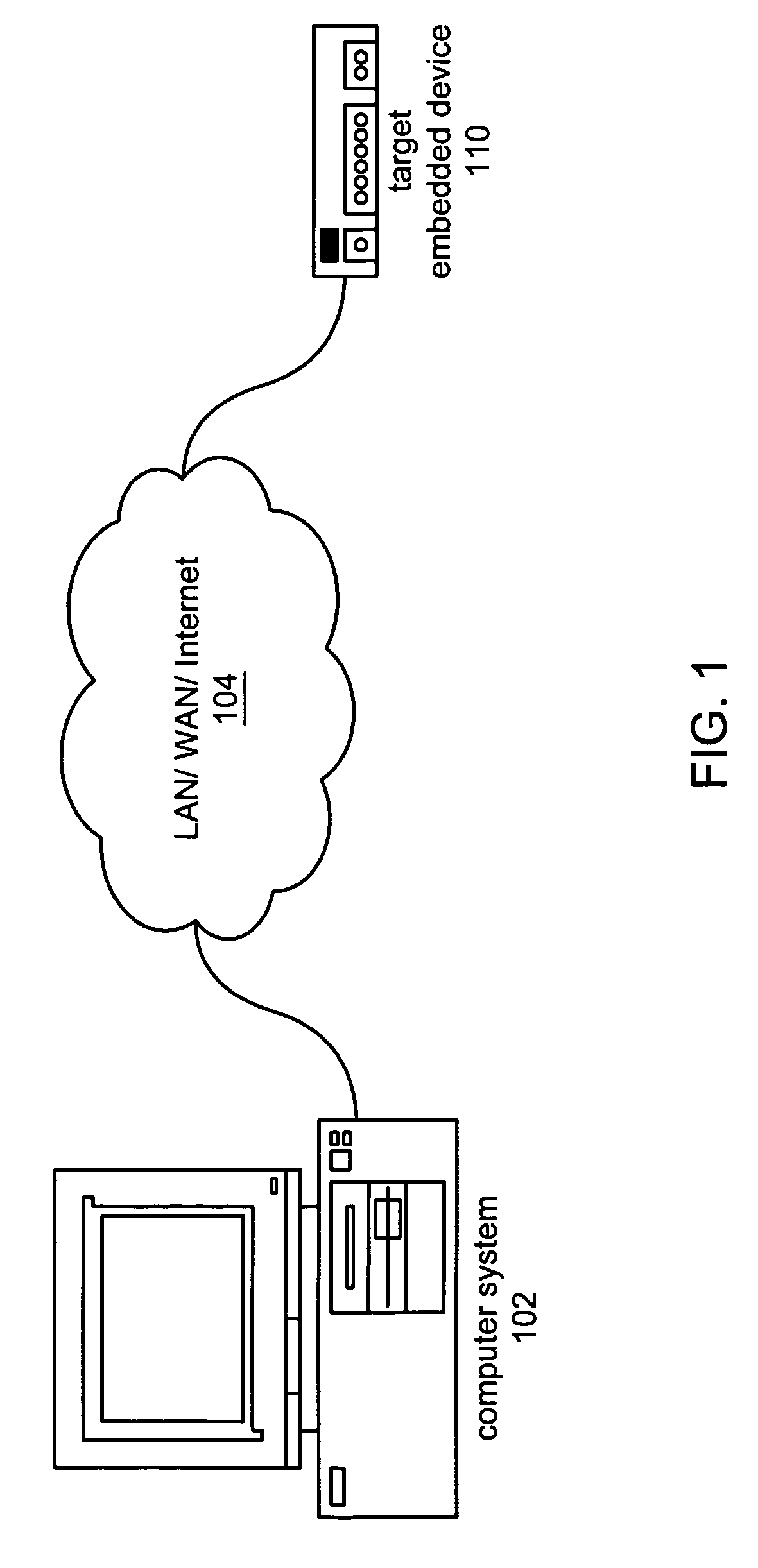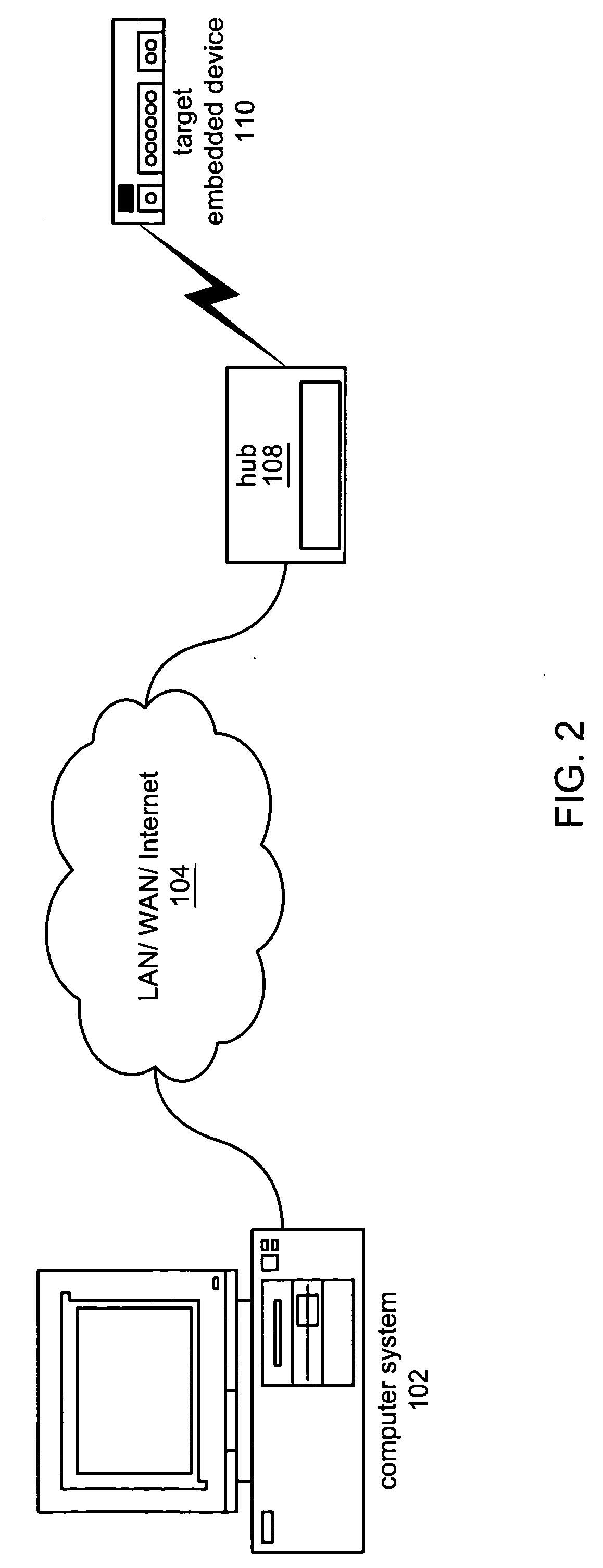Compact modular embedded device
a modular, embedded technology, applied in the direction of electrical apparatus casings/cabinets/drawers, instruments, computer control, etc., can solve the problems of limiting the application which may be run on the embedded device, the memory footprint of an application, and the situation may be exacerbated, so as to facilitate the development of compact modular devices, the effect of unprecedented size and functionality
- Summary
- Abstract
- Description
- Claims
- Application Information
AI Technical Summary
Benefits of technology
Problems solved by technology
Method used
Image
Examples
example process
[0378] The following is a simple example of one embodiment of the above described processes. In this example, the user creates a VI on the host computer 102, named Delay.vi, and wishes to run this VI on the target device 110.
[0379] On the host computer 102, the VI is transformed into an object file named Delay.o. The modules required for running the VI are determined by a dependency checker executing on the host computer 102, producing the following list (for example): [0380] uClibc / memmove.o (from directory uClibc take file memmove.o) [0381] cookie / mbCookie.o [0382] occur / mbOccur.o [0383] uClibc / memcpy.o
[0384] So at this point, the application VIs are converted into object files, and the required modules (that are also compiled into object files at this point) from the modular callback system 1906A are determined. Then, all the object files pertaining to the application (using an ordinary C linker) are lined into a single object file which becomes the “application object file”. I...
PUM
 Login to View More
Login to View More Abstract
Description
Claims
Application Information
 Login to View More
Login to View More - R&D
- Intellectual Property
- Life Sciences
- Materials
- Tech Scout
- Unparalleled Data Quality
- Higher Quality Content
- 60% Fewer Hallucinations
Browse by: Latest US Patents, China's latest patents, Technical Efficacy Thesaurus, Application Domain, Technology Topic, Popular Technical Reports.
© 2025 PatSnap. All rights reserved.Legal|Privacy policy|Modern Slavery Act Transparency Statement|Sitemap|About US| Contact US: help@patsnap.com



